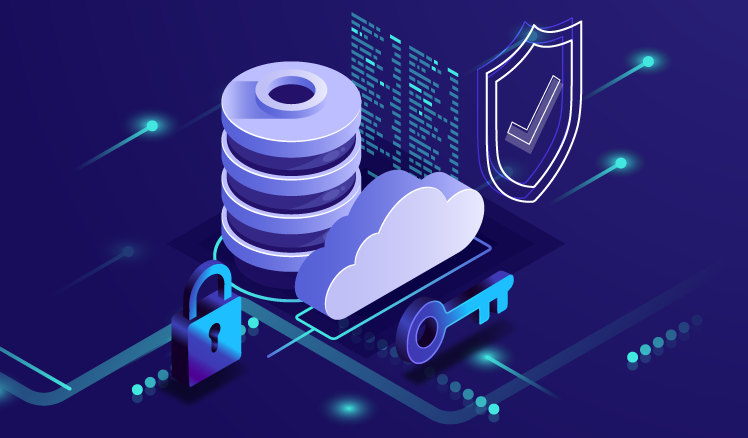What is Database Security?

The term "database security" is used to describe the several methods through which businesses safeguard their databases from intrusion. Data, the database management system, and any applications that connect to it must all be safeguarded for the database's security to be considered complete. Databases must be protected from malicious attacks, such as those posed by cyber security threats, as well as accidental or malicious data and database usage.
The incidence of data breaches has increased dramatically during the past few years. The General Data Protection Regulation (GDPR) is just one example of the many regulations and penalties for data breaches that businesses must deal with; some of these are extremely costly, and they come on top of the considerable damage to a company's reputation and customer base that these threats cause. Maintaining compliance, safeguarding a company's brand, and retaining customers all depend on strong database security.
How the Cloud Is Changing Security
Download this free research to learn more about the security and IT difficulties faced by multinational corporations as they migrate to cloud computing.
Take a Look Here to Find Out More
Can You Explain the Difficulties Associated with Database Safety?
Database security has many ongoing difficulties, but internet-based assaults are a particularly pressing one. Almost daily, hackers come up with new methods to breach data storage systems and steal sensitive information. Business operations need to make sure their database security is robust enough to withstand these kinds of assaults.
Some of these cyber security dangers, including phishing scams that steal and use users' credentials without their knowledge, might be hard to spot. The spread of malware and the demand for ransomware are two more typical cyber security issues.
The misuse of database access credentials by staff, partners, and outside contractors is another pressing issue in database security. Because users with proper authorization might steal information for their own ends, these exfiltration vulnerabilities are hard to prevent. The most prominent illustration of this problem is Edward Snowden's leak of NSA secrets. As a corollary, businesses should guarantee that authorized users of database systems and apps have access to only the data they need to perform their jobs. If they don't, they'll have a far easier time breaking into databases.
Where should I start when it comes to implementing database safety measures?
The database layer, the access level, and the perimeter are the three tiers of database security. Data in a database are protected by the database's own security measures. The goal of access layer security is to limit access to sensitive information or the systems that store it. Who can and who cannot access databases is decided by their perimeter security. The security measures at each level must be tailored to their specific needs.
Proper Safeguards for a Database
There may be many ways to handle database security, but there are a few standards that should be followed by all businesses. Database security best practices help businesses lessen their exposure to risk while strengthening their databases' defenses. While each method can be used independently, they provide the strongest defense when used simultaneously.
The hardware that stores, manages, and manipulates your database must be protected at all costs. Locking down the spaces where on-premises or cloud-hosted databases and their servers reside is an essential part of their physical security. The physical access to that equipment must also be monitored by security personnel. Having backups and disaster recovery plans in place is an important part of this best practice for securing databases in the event of a disaster. Organizations should also avoid storing sensitive data in a database hosted on the same server as public-facing services.
Firewalls and Internet application software: At the perimeter level, databases should leverage web applications and firewalls. Firewalls are essential for cyber security because they block unauthorized users from accessing a company's internal network through the internet. Access control systems for databases can be used to safeguard web-based applications. Similar to ACLs in that it regulates who can and can't use specific software, this database security mechanism limits and restricts access to specific online apps. Individual web application firewalls provide the same protections as network-wide firewalls.
Encryption is a powerful database security method because it may be applied directly to the database itself, close to the data. However, businesses can protect their data while it travels across their internal IT systems by encrypting it both at rest and in transit. No one can read encrypted information unless they have the key to unlock it. Therefore, even if a third party has access to encrypted information, they will be unable to decipher its contents. Encrypting databases is crucial for personal information protection and can help keep IoT devices safe.
Maintaining database security relies heavily on diligent password and permission management. IT departments or security specialists are typically in charge of monitoring these systems. One such database security best practice is the use of access control lists. Companies can manage passwords in a variety of ways, such by implementing dual or multiple factor authentication mechanisms, or by providing users with a limited amount of time to enter credentials. However, this method necessitates frequent revisions to lists of authorized users and their privileges. Although it may take some time, the end effect is well worth the effort.
Segregate Private Data: If important databases are kept in a separate location, it becomes much more challenging to breach database security. Isolation methods can make it so that unauthorized users have no idea sensitive databases even exist. Software defined perimeters are a helpful method of concealing the true network location of sensitive databases. This method is effective against zero-day attacks and makes it harder for attackers to use lateral movement techniques to take over databases. One of the most effective approaches to strengthen database security at the access level is through the use of isolation strategies. This method is typically bundled with database layer security measures like public key encryption and key derivation to create a comprehensive solution that is competitive in isolation.
Change management is planning ahead of time how databases will be protected while undergoing alterations. Mergers and acquisitions are just one type of change that might occur, as can new users obtaining access to existing information technology (IT) systems. The steps that will be taken to improve database and application security must be recorded. Data flows and the applications and IT systems that will access the database should also be determined.
The process of checking databases: In most cases, reviewing the database and application logs is a standard part of any database audit. This data shows which users accessed which repository or app, when they did so, and what they did while they were there. By informing database administrators as soon as possible, audits help mitigate the damage caused by data breaches. There will be less of an impact from data breaches if firms can quickly tell affected customers. Auditing the database is the last line of defense, providing centralized monitoring of the database's safety.
Safeguarding Techniques of the Present Day
As the importance of data continues to grow, one of the most pressing issues in data management is ensuring the safety of databases. Many of the above-mentioned strategies can help businesses reduce the numerous dangers to their databases. Many of these methods are used in more extensive solutions that fortify database security.
Sumo Logic uses state-of-the-art Artificial Intelligence (AI) techniques to further strengthen the security of users' databases and apps in real time. Sumo Logic is the best platform for bolstering database security because of its advanced troubleshooting tools and system monitoring features.





